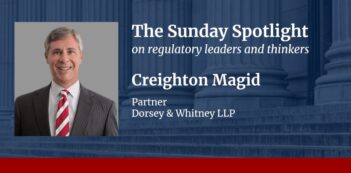
Federal and state environmental regulations ignore and exclude Native perspectives.
It is complicated! This common euphemism could not be more apropos for describing environmental regulation in Indian country.
Tribal, federal, and state governments may all have regulatory authority in Indian country depending on the subject matter, which means that confusion and uncertainty are not uncommon. The environmental regulatory scheme that applies to Indian country demonstrates this point, and this scheme also reveals how existing systems of power ignore and exclude tribal governments from effective environmental regulation.
We start with tribal sovereignty. Tribal sovereignty persists unless it has been explicitly divested by the U.S. Congress or unless the federal courts have found an implicit divestiture of this authority. In the realm of environmental law, tribes possess the capacity to regulate unless they have been divested, and this regulatory authority is the strongest over a tribe’s own citizens and territory.
It is not uncommon, however, for non-Indians to bring environmental pollution to tribal communities. For example, non-Native polluters target Indian country for waste disposal and for the establishment of polluting industries, such as natural resource extraction. Tribes may want to regulate non-Indians and non-Indian-owned land that may be located within Indian country to mitigate the effects of pollution in their communities.
Starting in 1981, however, the U.S. Supreme Court found that tribal governments no longer had the authority to regulate non-Indians on non-Indian land within Indian country, unless one of two exceptions applied.
In Montana v. United States, the Court declined to authorize general tribal regulatory authority over non-Indians despite the reality that non-Indian actions within Indian country could have significant ramifications, especially in the environmental context.
The Court explained that a tribal government could only regulate where, first, a consensual agreement existed—that is, where the non-Indian actor agreed to the regulation. The Court also recognized, however, that a tribe “may also retain inherent power to exercise civil authority over the conduct of non-Indians on fee lands within its reservation when that conduct threatens or has some direct effect on the political integrity, the economic security, or the health or welfare of the tribe.”
This second Montana exception is commonly known as the “direct effects” test. Some tribal governments have successfully demonstrated that environmental pollution has some “direct effect” on “the health or welfare of the tribe,” consistent with this second exception.
Other tribes have started to require that non-Indians who wish to conduct environment-related activities within their territories obtain a tribal permit that indicates the non-Indians’ consent to the tribe’s regulatory authority. Although the Montana decision places a limitation on tribal regulatory authority, some tribes have found creative ways to continue such regulation.
But tribes are not the only regulatory actors within Indian country.
The federal government has enacted numerous environmental statutes, such as the Clean Water Act and the Clean Air Act, that courts typically have held to be statutes of general applicability covering Indian country. As a result, tribal governments may not use their inherent sovereignty in a way that conflicts with the mandates of these federal environmental statutes.
Several of these statutes have tribes-as-states (TAS) provisions. As the name of these provisions suggests, tribal governments that have TAS status may act like states and regulate according to certain provisions of federal law in a cooperative federalism format. For example, under Section 303 of the Clean Water Act, tribes with TAS status may establish the designated water criteria for waters falling within their territories, instead of relying only on federal standards.
Accordingly, TAS provisions allow tribes to express their environmental ethics through the federal environmental provisions. But TAS provisions are relatively limited, and tribal governments must still comply with federal mandates. If a tribe does not have TAS status—and most do not—the U.S. Environmental Protection Agency generally regulates air quality within Indian country.
Although federal regulation is common, most states have limited environmental regulatory authority in Indian country—although one significant exception is Oklahoma. Last June, the Supreme Court decided the case of McGirt v. Oklahoma, finding that the Muscogee (Creek) Reservation had not been diminished. Following the Court’s decision, Oklahoma Governor Kevin Stitt requested, and the Trump Administration approved, that the state of Oklahoma have environmental regulatory control in Indian country.
Another exception to the general lack of state regulation is that tribes are treated the same as municipalities, rather than states, under the federal Resource Conservation and Recovery Act, which results in the application of state regulatory control to Indian country for waste disposal.
But, in many other contexts, courts have limited how state environmental regulatory authority intrudes on tribal authority.
With a broad understanding of the environmental regulatory scheme applicable to Indian country, we can now consider how this structure perpetuates systems of power that effectively ignore and sometimes exclude tribal governments.
An example of this power imbalance is the practice of tribal consultation. The federal government has enacted federal consultation regulations, but such provisions are wholly inadequate. For instance, Section 106 of the National Historic Preservation Act of 1966 requires “tribal consultation in all steps of the process when a federal agency project or effort may affect historic properties that are either located on tribal lands, or when any Native American tribe or Native Hawaiian organization attaches religious or cultural significance to the historic property, regardless of the property’s location.”
Section 106 and related regulations provide guidance about when consultation is triggered and how the federal government should conduct itself when consulting with tribes. The regulations, however, do not take into consideration how a tribal government may wish to interact, nor do the regulations give tribal governments the opportunity to consent to federal acts. Although President Biden released a memorandum signaling his commitment to effective consultation and to strengthening the relationship between the federal government and tribal governments, there is still nothing requiring the federal government to conduct consultation in a certain way.
As a result, tribal governments regularly complain that federal consultation is, at best, ineffective and, at worst, violative of tribal sovereignty and the international obligation that Indigenous communities give free and informed consent prior to government actions on their territories.
One of the primary arguments raised by the Standing Rock Sioux and Cheyenne River Sioux Tribes in their efforts to halt construction of the Dakota Access Pipeline was that the federal government failed to consult with the Tribes in a manner that the Tribes deemed appropriate. As a result, the Tribes did not have an opportunity to contribute meaningfully to the suitability of the then-proposed project. The Tribes argued that they were ignored and excluded.
The environmental regulatory structure applicable to Indian country is certainly complicated—with tribal, federal, and, on occasion, state environmental regulations in place. This structure ignores and excludes tribes from existing systems of power. Regulators at every level can—and should—certainly do better by tribal governments moving forward.
This essay is part of a series entitled Native Peoples, Tribal Sovereignty, and Regulation.




